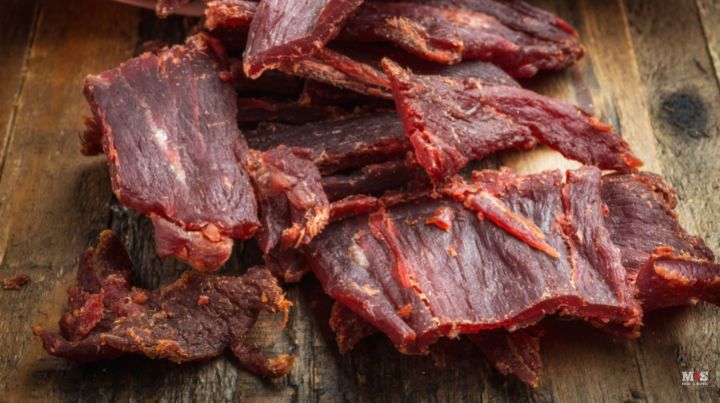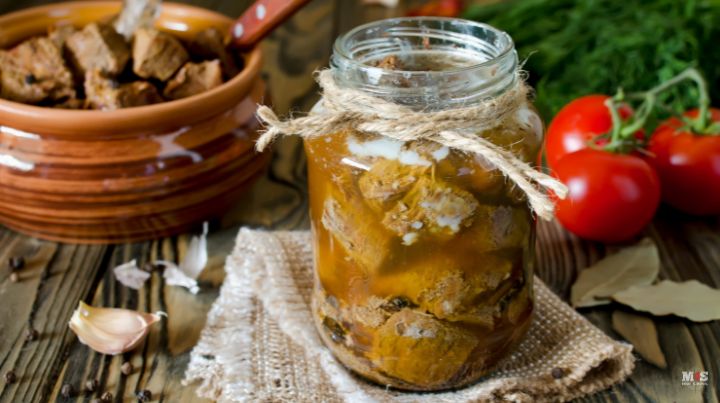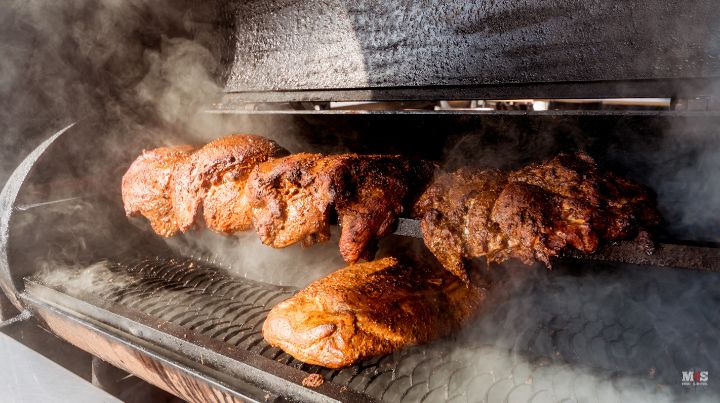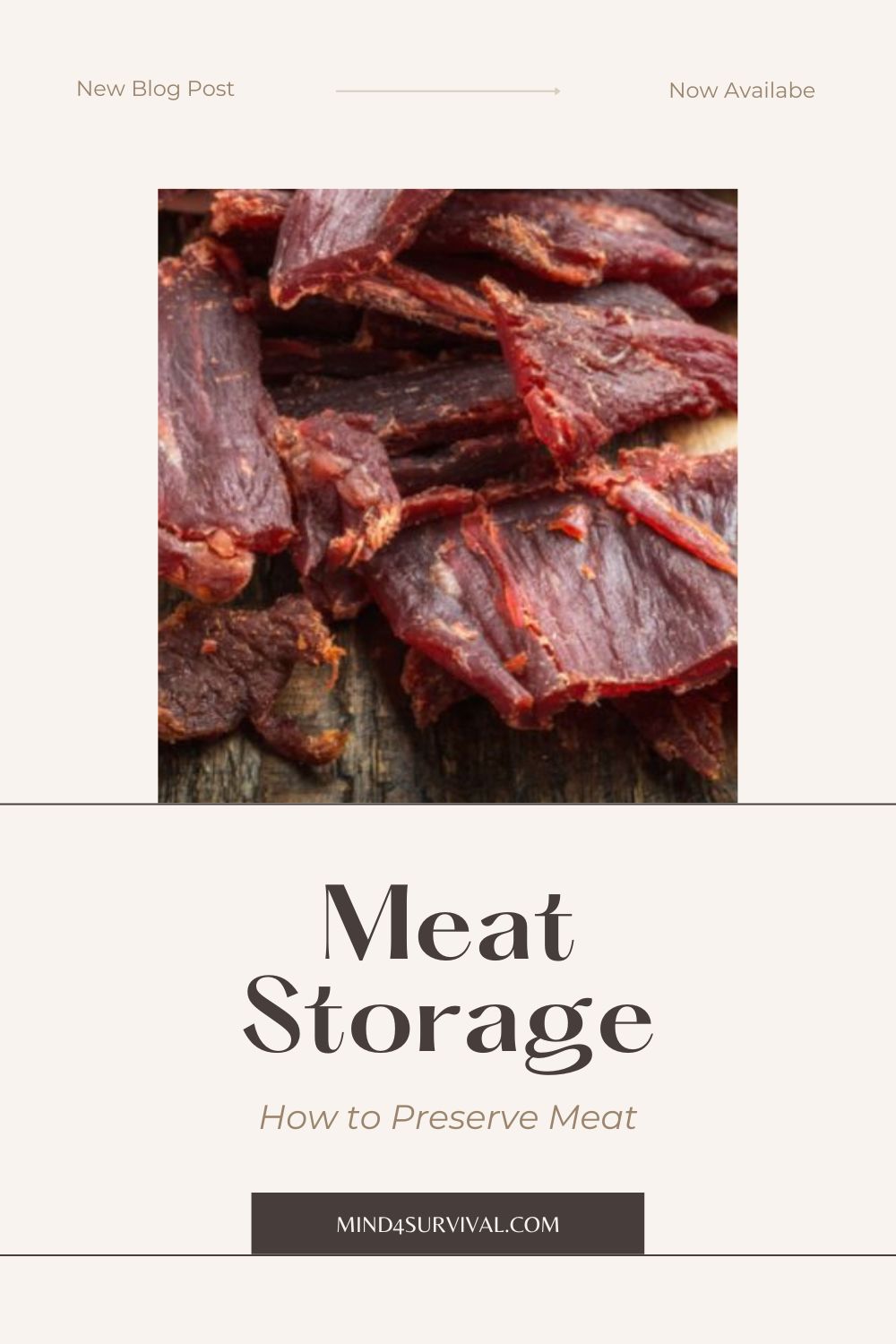Meat Storage for When There Is No Freezer

Between grocery store inflation and a big media push for regular people to eat less meat, many concerned citizens are looking to shore up their food supplies, particularly natural sources of protein. More people than ever are starting their own backyard flocks of meat birds, but this isn’t practical for everyone. Neither is moving out to the country and buying livestock. For many people, the best option is to buy an extra freezer and then purchase a quarter or half a steer.
I’ve been doing this since I lived in the suburbs; you can get a great deal of meat that’s often fairly high quality. And if you’ve got some combination of teenagers and gym rats at your house, having a big quantity of meat on hand saves a lot of trips to the grocery store.
But what about power outages? What do you do if you’ve just spent many hundreds of dollars on a freezer and then again on meat?
The first answer is not to panic. Most freezers are designed so that, in the event of an outage, if you keep the lid closed, the meat won’t thaw for at least two days. I had a summer outage of 14 hours when 80 mph winds knocked down power lines. I keep my freezer in a non-climate-controlled shed, and daytime temps were above 90, but 14 hours later, the meat was still rock hard.
After that, though, I did buy a small generator, and I always have fuel on hand, treated with Sta-Bil, so it lasts. If you have a gas station near you that sells ethanol-free fuel, consider that because ethanol-free is also a better option for long-term storage. That’s because ethanol can absorb moisture and other impurities from the surrounding air, which results in separation, corrosion, and other fuel problems.
Even with my preps fairly well set, I always think to myself, what else could go wrong? I’m not a particularly negative person; I’ve just had enough things go wrong unexpectedly that I’ve gotten into the habit of always looking at the next step. What if I couldn’t get fuel for a month? What if I manage to break my generator?
People stored meat before refrigerators and freezers. Here are some other options.
Canning

You need a pressure canner and a heat source to do this. If you are not already an experienced canner, an emergency situation is probably not the time to give it a whirl because learning how to can safely requires patience and attention to detail. However, if you’re already an experienced canner, it’s something to think about.
It will depend on what kind of stove you have. Mine is ancient and does not require a spark to kick on, so I can still cook during power outages as long as I have propane in the tank. I don’t have enough experience cooking with wood stoves to know whether or not the heat is consistent enough for pressure canning.
However, the propane cookers you use in a crawfish boil or fish fry are not terribly expensive. And to be honest, if you only have electric appliances in your house, you might want to think about getting one anyway, just in case of emergencies, even if you have no interest in canning. And as long as you have an area sheltered from the wind, propane cookers do deliver a flame that’s even enough for canning.
Again, I’m not really suggesting picking up a burner and a tank of propane, just in case you might use it later. I am suggesting that you think about how practical canning meat might be for you. If you already know how to pressure can meat safely, if you have off-grid cooking options in place, this could be a realistic option. And if you’re not there yet, maybe now is the time to learn more about pressure canning. Or maybe it’s time to think about your off-grid cooking options.
Dehydrating
Of course, that all sounds like a ton of work, which it is. An easier option may be to dehydrate your meat, and this one is actually my go-to. I make lots and lots of jerky every year.
Now, my climate is nearly ideal for dehydrating. In the summertime, I only use my dehydrator for the final pasteurization stage of drying tomatoes; the sun is enough on its own. But I do have a Nesco dehydrator which comes in handy for jerky-making. I mostly use the dehydrator because of my dogs; they’re not interested in my tomatoes drying outside, but they’d rip apart my bird-proofed cage to get at the dried meat.
Meat is easier to screw up than vegetables, but it’s also important to understand what’s actually dangerous vs. what just has an unusual texture. To get the ideal level of chewiness, many people like in jerky requires a bit of control, which is why those Nesco dehydrators are so nice. If you follow recipes carefully, you can get that tough-but-chewy texture most fans of jerky love.
However, you can have perfectly safe meat with slightly less controlled conditions by slicing the meat more thinly and erring on the side of drying more than less. I’m paranoid about food spoilage and have too many things to do during the day to babysit the dehydrator, making sure every single strip is exactly right. I’m more concerned with food safety and less concerned with the perfect texture.
Spoilage is caused when microorganisms colonize food. These microorganisms need water, however, which is why reducing the moisture content of foods allows them to last a long time. When I don’t pull off individual strips of meat at the exact right moment and just let everything go until they are all safe to eat, some pieces are always overly dry. They are brittle but last a long time and retain their fantastic flavor.
Upon doing a little research, I found that this was the first step Native Americans used in making pemmican. They sliced meat into thin strips and then dried it in the sunshine if possible, and over smoke if it wasn’t. And smoking has been a time-tested method of meat preservation in parts of the world too cold and/or humid to reliably sun dry foods.
Smoking

Smoking can be as elaborate as a smokehouse or as simple as poles propped up over a campfire that’s being tended. Most of us will probably land somewhere in between.
Slicing meat thinly and keeping it over smoke held between 70° and 90° (no more than 120°) removes moisture from the meat to preserve it.
Smoking can also lend itself to all kinds of delicious things, like smoked sausage. While smoking ground meats creates a delicious product, like pressure canning, it requires special equipment and attention to detail. It isn’t something to try on the fly but rather something to think about if you’re already an experienced grill master or are willing to put some time, money, and energy into a new skill.
Properly cured and smoked meats can keep for months without refrigeration if you live in a relatively cool climate. If you are interested in learning more, this website contains a balance of honest information about the risks involved without being too discouraging. I would also recommend picking up at least one book before trying it. Putting Food By by Hertzberg, Vaughan, and Greene is my go-to, but I’m sure there are lots of other good ones out there as well.
Salting
Salting, again, preserves the meat by lowering the moisture content. Also, most bacteria cannot reproduce in a highly saline environment. In the days before refrigeration, packing barrels with layers of meat and salt was how most navies sailed around the world.
Of course, things went wrong, and people also died from food poisoning more often then, too. In fact, the bacteria that causes botulism, Clostridium botulinum, got its name from the Latin word for sausage, botulus. The first botulism cases described by a German doctor in the early 1800s were traced back to sausage.
Fortunately, we have a much better understanding of how exactly disease organisms multiply these days, and lots of guides exist to help you determine how much salt you need for your given quantity of meat. Also, the proper addition of pink curing salt (nitrates) to your regular salt decreases your chances of getting botulism from salted meat even further because the nitrates kill any Clostridium spores present in the food.
Like other food processing methods, this one isn’t best attempted on the fly but should be researched beforehand. There are some good websites here and here with some precise recipes for curing different kinds of meat. And again, it might be helpful to pick up a book such as Putting Food By or Marianski and Marianski’s Home Production of Quality Meats and Sausages. Books such as these not only give recipes but help you understand why each step is important. Do some research first, and think about whether or not this is something you’d want to try.
People have been salting meat for millennia. When you look at the amount of salt required to hold meat without refrigeration, it may sound disgusting. However, if you’ve ever had Pinnekjøtt or Norwegian salted mutton ribs, you’ll know that salted mutton, soaked for the proper amount of time and then steamed, can be amazingly delicious.
Personally, I have done a lot of jerky-making, some canning, and some brining to preserve meat. Not only are these useful skills to have, but they also produce surprisingly delicious food. If you’ve been stocking up on meat and piling it in your freezer, now might be a good time to learn what else you can do with it. Equipment for canning, smoking, and salting is still readily available. You may as well see what piques your interest and start the next step toward acquiring your next homesteading skill.
Have you preserved meat? Tell us about it in the comments below.
Additional Resources:
- Best Freeze Dryer for Home Use – What to Know Guide! (2023)
- Food Preservation: Fermentation
- Food Forest Abundance: Self-Reliance & Success with Jim Gale
- 7 Ways to Cook Off-Grid

Don't Miss Out!
Join the thousands of people who rely on Mind4Survival preparedness advice by subscribing to our FREE newsletter.
- Practical preparedness information
- Zero Spam
- < 0.25% of people unsubscribe




Join Mind4Survival!
Stay informed by joining the Mind4Survival! 100% Secure! 0% Spam!
Follow Us!
Affiliate Disclosure
Mind4Survival is a free, reader-supported information resource. If you make a purchase through our link, we may, at no cost to you, receive an affiliate commission.


I am working on cheap home freeze dryer. The first step is an ordinary refrigerator freezer. Then you put your food into a vacuum chamber and the water sublimes–ice to water vapor without melting first. This produces a higher quality item than canning or dehydrating, lasts longer than either, and will be affordable even for welfare recipients.
I have a vacuum pump with a vacuum chamber. The pump is awful and stunk up my house. But I got a hand pump from Walmart’s air bed section, was able to draw 1/4 atmosphere of a vacuum with that–and it has lasted for over a week. I am a 70 year old woman. If I can do that myself, a man should be able to get it to 1/2 an atmosphere or better. I am looking for a better pump, but it is nice to know that a grid-down vacuum is easy. There are propane freezers, but they are remarkably expensive. In the winter, there is grid-down freezing over most of the US, but that is not when things are ripe.
Vacuum chambers are easy to find on the web, costing about $70 to $500 or more. Mine cost $120 or so with the pump and is two gallons in size. So figure on around $100 for that part.
Frozen does not keep for years, and you lose all your food if the grid goes down for a few days.
I just searched for drying racks for my vacuum chamber, and found LAB1ST, in Shanghai, China, makes freeze dryer vacuum chambers with racks for about $1000 or so. That is way over my budget, but it is half the cost of Harvest Right. I have no idea whether it is a good choice or not (I have learned to hate Chinese manufactures), but some of you might want to check it out.
I suspect there are others.
can I use Morton solar salt ( like for a water softener ) to salt meat and if yes should I add anything to it